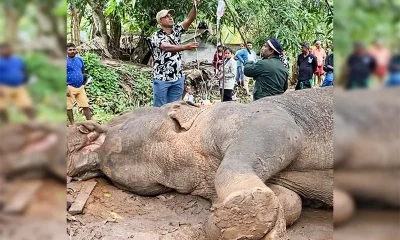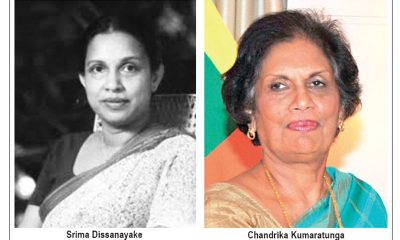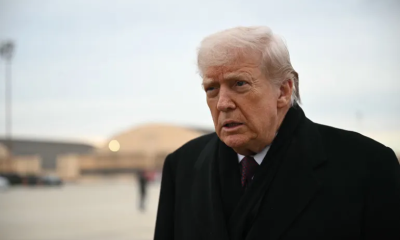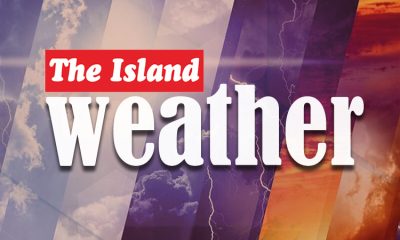News
SJB to step upanti-govt. protests

The SJB is planning to launch street protests in January against the government. Addressing the media at the Opposition Leader’s office, on Saturday, the party’s Deputy National Organiser MP S. M. Marikkar said the first month in 2023 would be crucial to the Sri Lankans.
“The people’s earnings will dwindle due to Ranil Wickremesinghe’s blood-sucking tax policy while parents are already struggling to purchase items necessary for the new school year. Meanwhile, the Minister of Power is attempting to further burden the people by increasing electricity tariffs and threatening to impose 10-hour power cuts,” he said.
“The government will aggravate the people’s economic woes. Parents will not be able to buy school items for their children. Those having two meals now will have barely enough to sustain themselves. The underprivileged will be disadvantaged due to the increase in electricity tariffs as a higher percentage will be charged to them.
If the President and his ministers intend to act in this manner, we will bring the people onto the streets in protest,” he said. The MP said that the Government declared an additional holiday on Monday as an attempt to close down the Government printers, preventing the Election Commission from issuing a Gazette calling for election nominations.
“Elections must be announced within the next two weeks. But we are hearing that there is an attempt to call for elections but not hold them, claiming the country is under an economic disaster situation,” he said. Marikkar accused the Government of taking away the rights of the people including the right to life, speech and expression. “They have destroyed the democracy in the country, its economy and freedom. Now they are trying to destroy the people’s right to vote,” he noted. “The people will be left with no choice but to take to the streets. The SJB will lead these protests,” he said.
Latest News
IMF Executive Board approves US$206 Million in Emergency Financial Support for Sri Lanka

The IMF Executive Board approved emergency financing under the Rapid Financing Instrument (RFI), providing Sri Lanka with immediate access to SDR 150.5 million (about US$206 million,
equivalent to 26 percent of quota) to help Sri Lanka address the urgent needs arising from the catastrophic Cyclone Ditwah and preserve macroeconomic stability.
Latest News
Navy clears major bridge obstructions in Peradeniya and Lewella

In response to severe weather impacts, the Sri Lanka Navy conducted a diving and technical assistance operation on Friday (19 Dec 25) to clear major debris obstructing vital infrastructure.
Heavy rainfall caused a significant rise in the water level of the Mahaweli River, washed large quantities of debris, including logs and bamboo, downstream. These remain lodged in the Diyakapanathota in Gatambe, Peradeniya and Lewella bridges, obstructing the smooth flow of water.
Acting promptly upon request, a Navy diving team executed a coordinated operation in collaboration with the Road Development Authority. The team removed the accumulated debris, restoring normal water flow through the bridges.
Latest News
Landslide early warnings issued to the districts of Badulla, Kandy, Kurunegala, Matale and Nuwara-Eliya extended till 8AM on Sunday (21)

The Landslide Early Warning Centre of the National Building Research Organization (NBRO) has extended the Landslide Early Warning issued to the districts of Badulla, Kandy, Kurunegala, Matale and Nuwara-Eliya till 08:00AM on Sunday (21st December 2025)
The LEVEL III RED landslide early warnings issued to the Divisional Secetaries Divisions and surrounding areas of Medadumbara, Doluwa, Ududumbara and Minipe in the Kandy district, and Nildandahinna, Hanguranketha, Mathurata and
Walapane have been extended.
LEVEL II AMBER landslide early warnings have also been issued to the Divisional Secetaries Divisions and surrounding areas of Soranathota, Hali_Ela, Passara, Meegahakivula, Badulla, Lunugala and Kandeketiya in the Badulla district, Thumpane, Harispattuwa, Udapalatha, Kundasale, Akurana, Poojapitiya, Udunuwara, Pathadumbara, Pasbage Korale, Gangawata Korale, Hatharaliyadda, Yatinuwara, Ganga Ihala Korale, Panvila, Pathahewaheta and Deltota in the Kandy district, Rideegama in the Kurunegala district, Ukuwela, Naula, Matale, Ambanganga Korale, Rattota, Pallepola, Wilgamuwa, Yatawatta and Laggala Pallegama in the Matale district, and Nuwara-Eliya in the Nuwara-Eliya district.
LEVEL I YELLOW landslide early warnings have been issued to the Divisional Secetaries Divisions and surrounding areas of Uva Paranagama, Welimada, Haputhale, Haldummulla, Ella and
Bandarawela in the Badulla district, Alawwa, Mallawapitiya,
Polgahawela and Mawathagama in the Kurunegala district, and Kothmale East, Ambagamuwa Korale, Kothmale West, Thalawakele and Norwood in the Nuwara-Eliya district.
-

 Midweek Review4 days ago
Midweek Review4 days agoHow massive Akuregoda defence complex was built with proceeds from sale of Galle Face land to Shangri-La
-

 Features7 days ago
Features7 days agoWhy Sri Lanka Still Has No Doppler Radar – and Who Should Be Held Accountable
-

 News3 days ago
News3 days agoPakistan hands over 200 tonnes of humanitarian aid to Lanka
-

 News3 days ago
News3 days agoPope fires broadside: ‘The Holy See won’t be a silent bystander to the grave disparities, injustices, and fundamental human rights violations’
-

 Latest News7 days ago
Latest News7 days agoLandslide early warnings in force in the Districts of Badulla, Kandy, Kegalle, Kurunegala, Matale, Nuwara Eliya and Ratnapura
-

 News4 days ago
News4 days agoBurnt elephant dies after delayed rescue; activists demand arrests
-

 Features7 days ago
Features7 days agoSrima Dissanayake runs for president and I get sidelined in the UNP
-

 Editorial4 days ago
Editorial4 days agoColombo Port facing strategic neglect

















